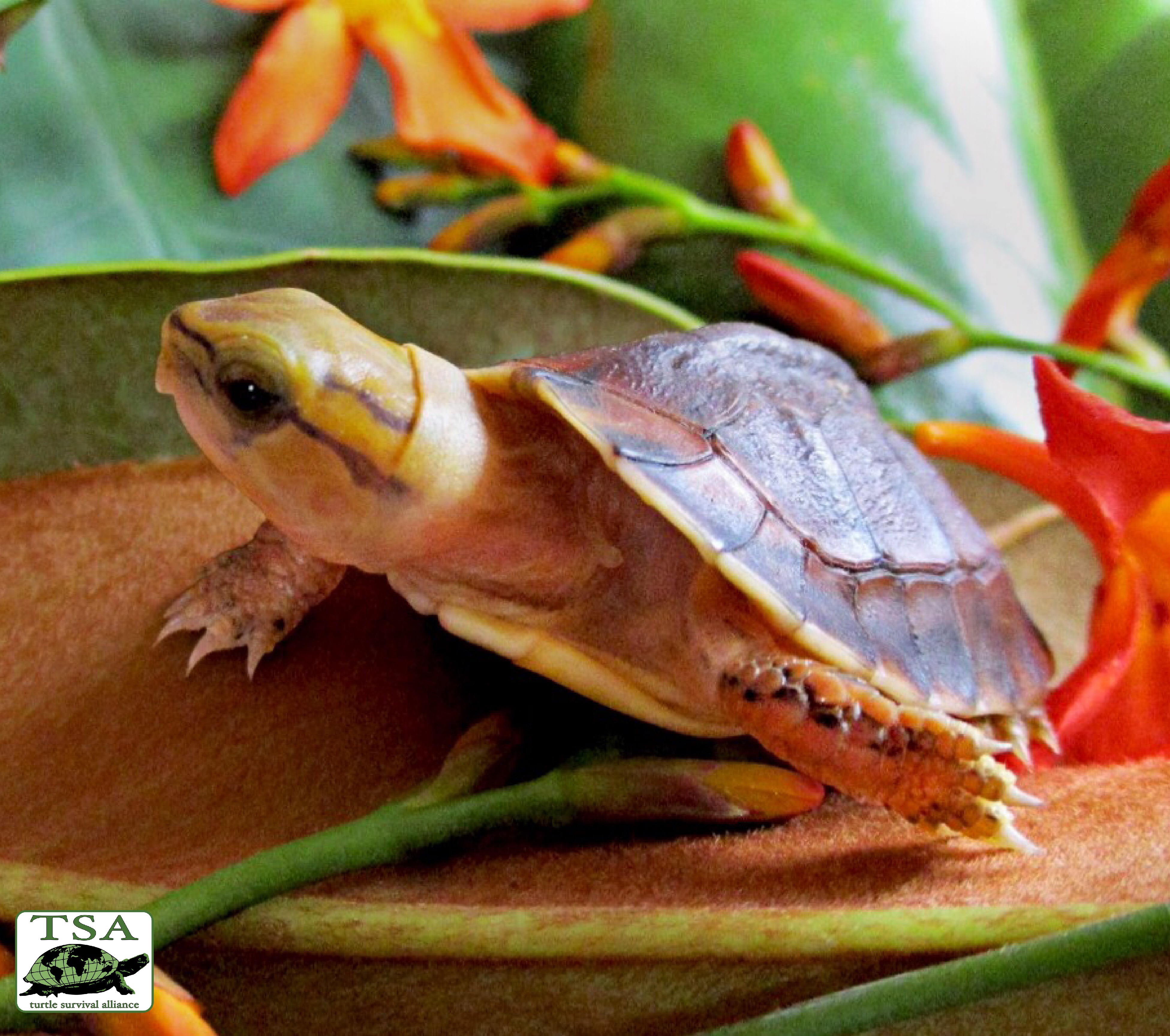Species Spotlight Vol. 5
by Jordan Gray 

Photo Credit: Sheena Koeth
McCord’s Box Turtle (Cuora mccordi)
Countries of Origin: People’s Republic of China
IUCN Status: Critically Endangered
Estimated surviving population: Unknown/Functionally Extinct
Habitat: Bamboo forests within and broadleaf forests accompanied by shallow wetlands and small streams in a secret area of the Guangxi Zhuang Autonomous Region of southeast China.
Habits: In the wild, McCord’s Box Turtle is usually active in early dawn and late afternoon, until dusk, foraging on insects like dung beetles, gastropods like snails, annelid worms, as well as fruits. Females lay 1 - 6 eggs per clutch and can triple-clutch per year. While juveniles are aquatic, adults are mainly terrestrial.
Size: Males 13-16 cm, Females 15-23 cm
Factoid: McCord’s Box Turtles were only described as a species as recently as 1988 based on imported specimens from Hong Kong; its true origins remained a mystery for two decades until scientists finally found their habitat. Although never a common species, the McCord’s Box Turtle was, for at least one farmer, common on their land. This is evidenced by an anecdote that the farmer would hurl these box turtles at water buffalo in their agricultural field, as the turtles were more common there than stones!
Greatest Threats: Collection for the food and pet markets, deforestation, flooding, and pollution. In the 1960’s, the locals attempted to use this species to produce “turtle jelly”, although it was considered less-desirable than that of the Chinese Three-striped Box Turtle (Cuora trifasciata). In the 1980’s, turtle collectors visited the locality of the box turtle’s population and started to purchase them from the locals; increasing the demand of collection. By the early 2000’s, during which time more than 700 were collected, the population started to collapse. While the collection for international trade was its major threat, other factors including habitat destruction, and a severe flood led to their presumed extirpation. Today, it is believed that any remnant of this turtle’s population would be found in the form of some solitary males traveling between the bamboo patches in the forest.
How you can help: The McCord’s Box Turtle is considered to be one of the “Top 25 Most Endangered Tortoises and Freshwater Turtles” by the Turtle Conservation Coalition. It is only through captive-breeding programs like here at our Turtle Survival Center, that the McCord's Box Turtle has a chance at survival. Pictured is our first hatchling of the species at the TSC. You can best assist us in our efforts with preserving this species by DONATING TODAY!
